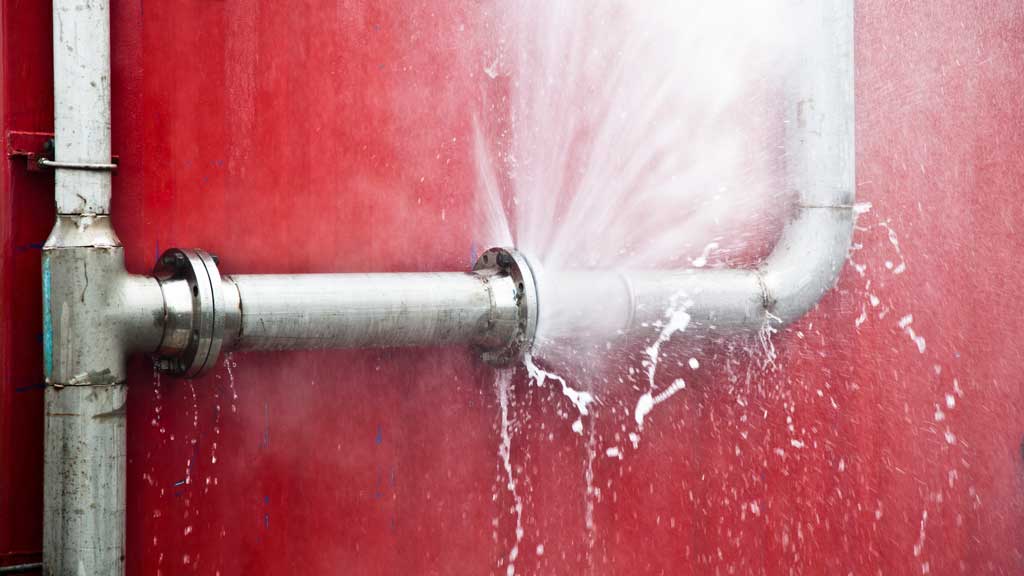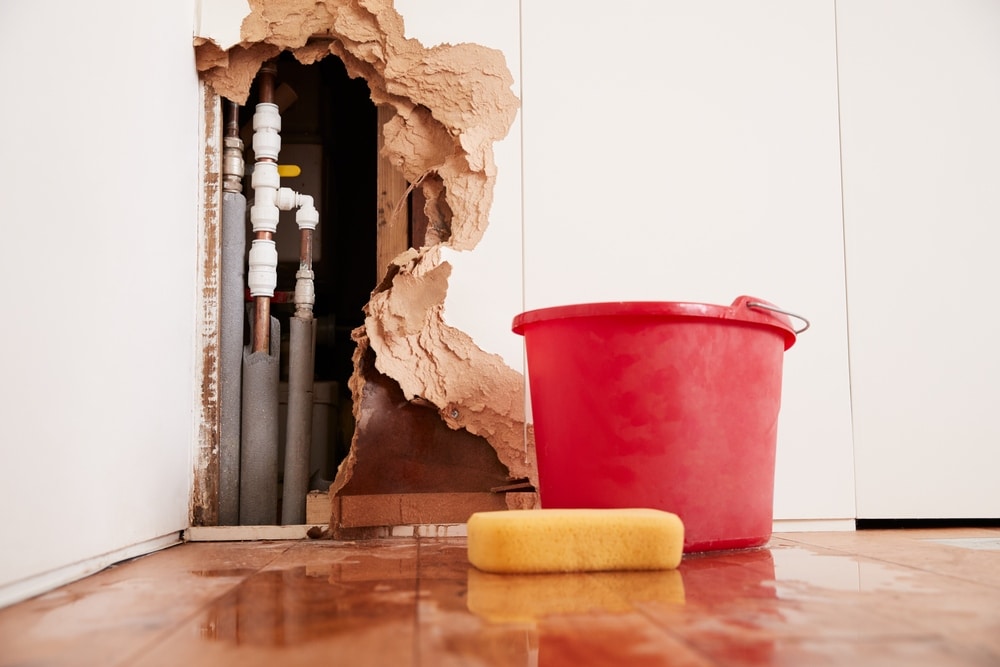How to Fix a Burst Pipe Yourself: A Step-by-Step Guide for Homeowners
How to Fix a Burst Pipe Yourself: A Step-by-Step Guide for Homeowners
Blog Article
Protecting Against Burst Water Lines: Crucial Tips to Shield Your Pipes
Preventing burst pipes is a critical issue for home owners, particularly during colder months when the risk of freezing is heightened. Carrying out strategic measures such as proper insulation, regular assessments, and keeping regular indoor temperature levels can substantially minimize the chance of pipeline failing. Additionally, recognizing emergency treatments outfits homeowners to respond swiftly to prospective plumbing issues. Numerous are uninformed of the specific susceptabilities that their pipelines may encounter. Exploring these vulnerabilities can supply important understandings right into safeguarding your plumbing system properly.
Understand Pipeline Vulnerabilities
Recognizing pipe susceptabilities is necessary for reliable pipes maintenance and stopping costly damage. Several aspects contribute to the susceptibility of pipes to bursts, including product structure, age, and environmental problems. Older pipes, specifically those made from galvanized steel or polybutylene, typically degrade with time, bring about enhanced danger of tears and leaks.
Temperature level variations can additionally considerably influence pipe stability. In chillier climates, water caught in pipelines can ice up, increasing and exerting pressure on the pipeline walls, which might inevitably lead to a burst. Moreover, high water stress can strain pipes, especially at joints and bends, enhancing the possibility of failure.

Insulate Pipes Correctly
Correct insulation of pipelines is critical for stopping cold and succeeding ruptureds during winter (burst pipe). Insulating your pipes system successfully safeguards versus temperature drops that can lead to costly damages. Begin by determining prone locations where pipes are exposed to exterior temperatures, such as cellars, attic rooms, and outside walls
Use foam pipeline insulation sleeves or wrap insulation tape around these locations to give a safety obstacle. Make sure that all areas of the pipelines, specifically those with limited warmth exposure, get ample insulation. Pay unique interest to fittings and joints, as these are a lot more prone to freezing.
When shielding, it's essential to choose products that satisfy regional building ordinance and are proper for the particular environment. As an example, fiberglass insulation is commonly advised for its thermal resistance residential or commercial properties - burst pipe. Additionally, consider using warmth cables or tape in extreme problems, which can be plugged in to give supplementary warm
Routinely check insulated pipelines for any kind of indications of wear or damages, as compromised insulation can lessen its effectiveness. By taking these proactive steps, you dramatically lower the threat of pipe bursts, guaranteeing a reliable pipes system throughout the cold weather.
Maintain Consistent Temperature
A stable indoor temperature is necessary for preventing burst pipelines throughout the frigid months. When temperatures decline, water within pipes can freeze, developing and broadening stress that might eventually create the pipes to burst. To mitigate this threat, homeowners must preserve a consistent temperature throughout their space, preferably no less than 55 ° F(13 ° C)Using a programmable thermostat can help manage indoor temperature levels efficiently, ensuring that areas with plumbing stay cozy also when your home is empty. Pay unique attention to areas that are much more vulnerable to cold, such as garages, basements, and attic rooms. Maintaining cupboard doors open under sinks can likewise allow warmer air from the home to circulate around plumbing.
Additionally, it is sensible to allow faucets to drip a little during severe cold spells. This small flow of water can avoid freezing by minimizing pressure within the pipelines. Moreover, throughout particularly serious weather condition occasions, take into consideration momentarily putting on hold any kind of nighttime problems on your thermostat to keep a constant cozy setting. By implementing these techniques, homeowners can dramatically reduce the danger of pipe ruptureds and guard their plumbing systems versus the extreme winter season components.
Consistently Inspect Pipes
Routine evaluations of pipes systems are crucial for preventing burst pipes and maintaining overall home honesty. Routine checks allow property owners to determine prospective issues before they rise into costly repairs or significant water damages. During these evaluations, it is vital to analyze noticeable pipelines for indications of deterioration, leaks, or put on. Pay special focus to areas susceptible to cold, such as cellars, attics, and exterior wall surfaces.
Furthermore, inspecting joints and connections is essential, as these points are often at risk to leakages. House owners need to likewise analyze water stress levels, as too much stress can strain the plumbing system and boost the risk of pipeline ruptureds.
Take into consideration scheduling expert from this source pipes examinations at the very least as soon as a year, specifically before wintertime, to ensure your system is gotten ready for colder temperature levels. Regular assessments not just help in identifying instant issues but additionally foster long-lasting upkeep methods that can improve the life-span of your plumbing system. By being aggressive in your method, you can secure your home against the turbulent and pricey effects of ruptured pipes. Prioritizing plumbing inspections is a financial investment in your home's health and wellness.
Know Emergency Procedures
Comprehending emergency procedures is essential for every single homeowner, have a peek at this site specifically after conducting routine plumbing evaluations. Being prepared for a pipes emergency situation can considerably reduce damage and conserve prices. Locate your main water shut-off shutoff; it is typically located near the water meter or where the main line enters your home. Familiarize yourself with its procedure, as turning off the water supply promptly can protect against considerable flooding.
Following, keep essential tools convenient. A pipes emergency kit should include a wrench, bettor, and towels, along with a flashlight and a container for small leaks. Furthermore, take into consideration having the contact information for a trusted plumbing easily available, must the situation escalate past your control.
If you detect a leakage or burst pipeline, immediately transform off the water and alert your plumbing. Document the damages with photos for insurance policy functions. Recognize the signs of prospective pipes issues, such as unusual water pressure changes or damp places on wall surfaces
Inevitably, aggressive expertise and quick action are important in managing pipes emergencies, guaranteeing your home continues to be safeguarded and decreasing prospective damage.

Final Thought
Finally, preventing ruptured pipelines necessitates a multifaceted method that includes understanding pipeline vulnerabilities, correct insulation, preserving constant interior temperatures, regular inspections, and expertise of emergency treatments. By carrying out these essential strategies, the danger of pipes failings can be significantly minimized, thereby guaranteeing the long life and efficiency of the plumbing system. Proactive steps not just protect versus possible damages but likewise add to overall water preservation and the security of residential or commercial property.
In chillier environments, water caught in pipelines can freeze, increasing and exerting pressure on the pipe wall surfaces, which may inevitably lead to a burst. When temperature levels drop, water within pipelines can ice up, creating and expanding pressure that may inevitably create the pipes to burst. By executing these techniques, house owners can dramatically reduce the risk of pipe bursts and secure their pipes systems against the severe winter months components.

Report this page